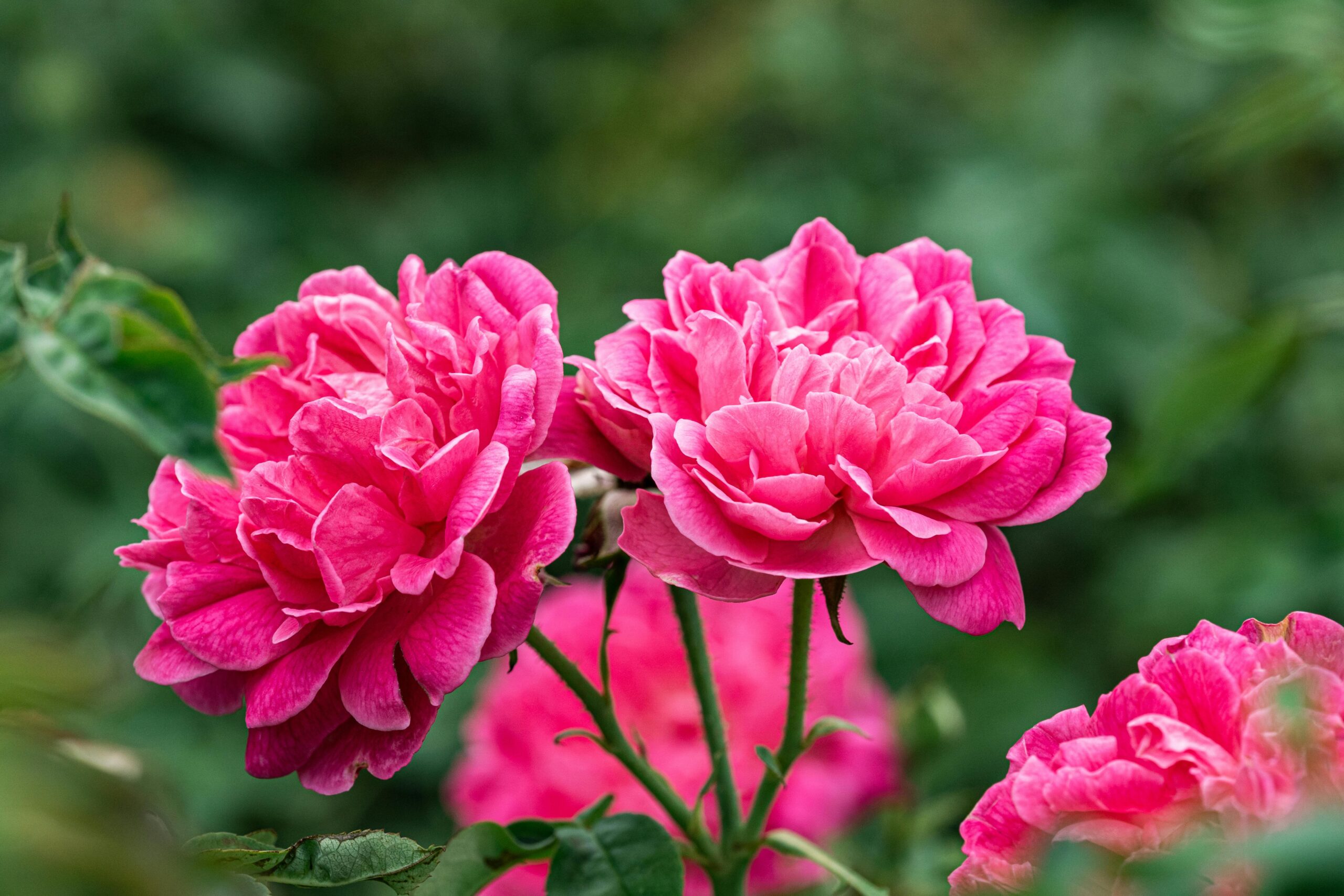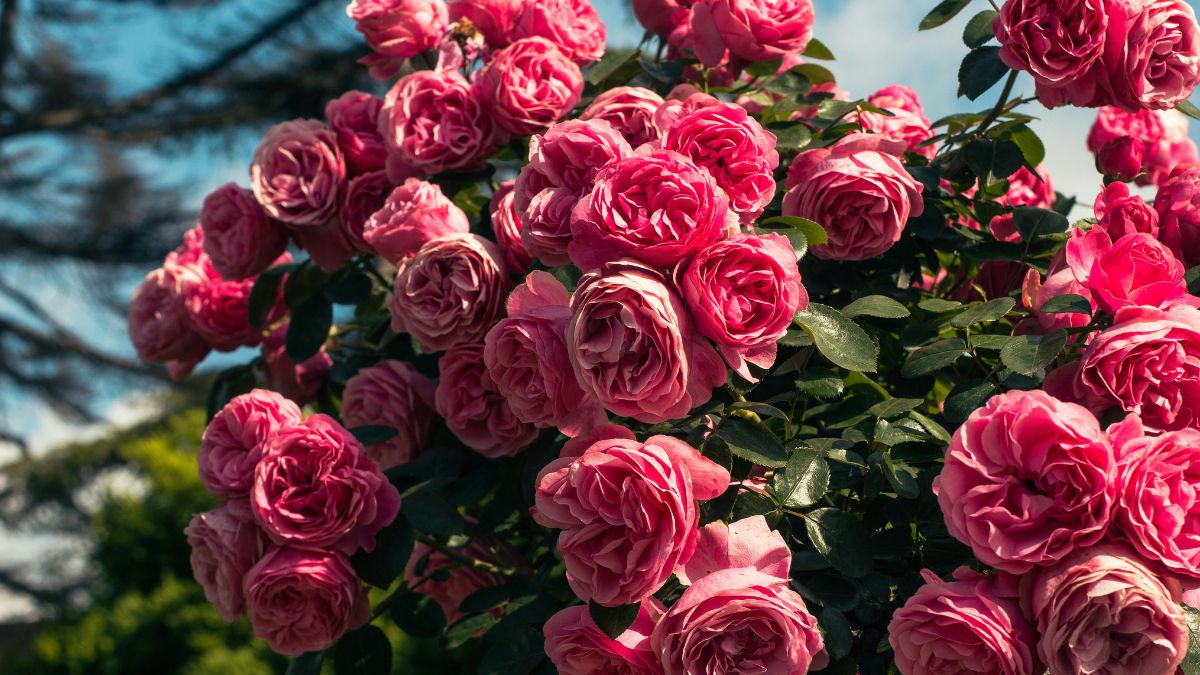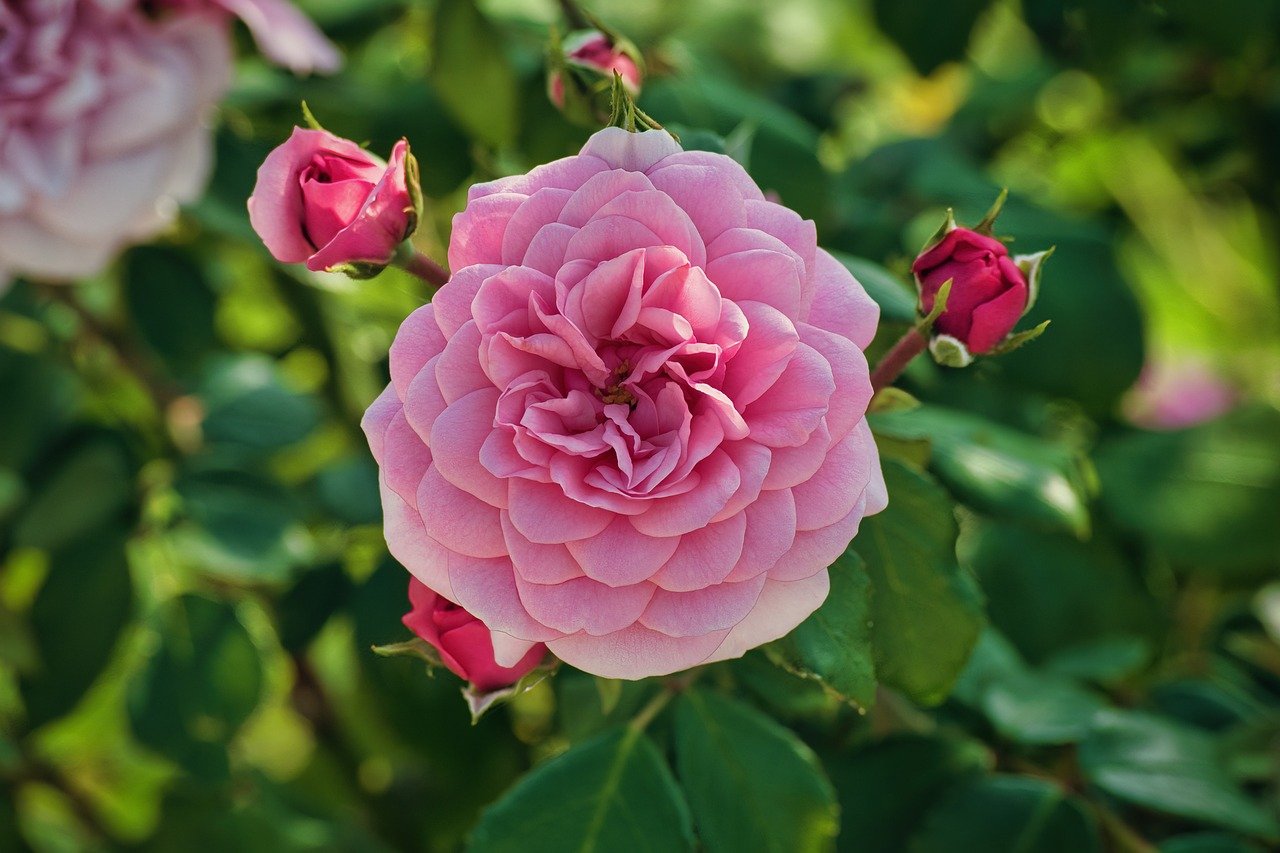A well-designed pink rose garden offers more than aesthetic appeal; it becomes a personal sanctuary, evoking peace and serenity. Whether you’re looking to create a sprawling garden filled with different shades of pink roses or a cozy corner with fragrant blooms, the process requires thoughtful planning and attention to detail. This article will guide you through creating your dream pink rose garden, from selecting the ideal rose varieties to understanding their growth conditions, with tips on layout, care, and maintenance.
The Allure of Pink Roses in Garden Design
The pink rose is a symbol of love, gratitude, and admiration, making it an ideal centerpiece for any garden. Its wide variety of hues, from soft pastels to vibrant magentas, allows for creative freedom in design. According to the Royal Horticultural Society, pink roses are among the most popular rose varieties in the UK, contributing to their timeless appeal in garden aesthetics.
Beyond beauty, roses also provide ecological benefits, such as supporting pollinators like bees and butterflies. A well-planned pink rose garden offers not only visual charm but also plays a role in biodiversity.

Step 1: Choosing the Right Pink Rose Varieties
When planning your pink rose garden, selecting the appropriate rose species is critical to success. Different varieties offer distinct attributes such as bloom size, fragrance, and growth habits, ensuring your garden aligns with your preferences. Below are some popular varieties to consider:
- Hybrid Tea Roses: Known for their large, classic blooms and strong fragrance, these roses are perfect for creating focal points.
- Floribunda Roses: These roses produce clusters of smaller blooms and are ideal for adding volume and texture to your garden.
- Climbing Roses: Perfect for adding vertical interest, these roses can be trained along walls, trellises, or fences to create stunning displays.
- Shrub Roses: If you prefer a more natural look, shrub roses offer dense foliage and abundant flowers, ideal for borders or mixed flower beds.
Step 2: Ideal Conditions for a Pink Rose Garden
Understanding the environmental needs of roses will help your garden thrive. While roses are relatively hardy, they do require certain conditions to flourish:
- Sunlight: Roses need at least six hours of direct sunlight per day. The more sunlight they receive, the better they will bloom. Therefore, choosing a sunny spot in your garden is essential.
- Soil: Roses prefer well-drained soil that is rich in organic matter. You can improve your garden soil by adding compost or well-rotted manure. A pH level between 6.0 and 6.5 is optimal for roses.
- Watering: Regular, deep watering is essential, especially during dry spells. However, avoid overwatering, as roses are susceptible to root rot. A good rule of thumb is to water your roses twice a week during dry periods, ensuring the soil is moist but not waterlogged.
- Air Circulation: Proper spacing between rose bushes allows for good air circulation, reducing the risk of fungal diseases such as black spot or mildew. A good spacing recommendation is 2–3 feet for most varieties, and up to 6 feet for climbing roses.
Step 3: Designing the Layout of Your Pink Rose Garden
When designing your pink rose garden, consider both functionality and aesthetics. Whether you have a large space or a small courtyard, there are several ways to create an attractive and cohesive layout:
- Symmetrical Layout: A formal, symmetrical layout with evenly spaced rows of roses creates a classic and elegant appearance. Consider pairing pink roses with neutral-colored gravel paths or white picket fences to amplify the effect.
- Cottage Garden Design: For a more relaxed and natural feel, intersperse pink roses with wildflowers, lavender, or peonies. This design emulates a traditional English cottage garden, where pink roses contribute to a whimsical and romantic atmosphere.
- Vertical Interest: Use climbing pink roses on trellises or pergolas to add height and depth to your garden. This can create a stunning backdrop or an archway for a garden entrance.
Step 4: Rose Garden Maintenance
Maintaining your pink rose garden involves regular care, which ensures that your roses continue to bloom beautifully year after year. Below are essential maintenance tips:
- Pruning: Regular pruning helps to remove dead or damaged branches and encourages new growth. The best time to prune roses is in late winter or early spring, just before new growth starts. When pruning, use clean, sharp shears and make cuts at a 45-degree angle.
- Fertilizing: Roses are heavy feeders and require a balanced fertilizer to promote healthy growth. A slow-release fertilizer applied in early spring, followed by a liquid fertilizer every six weeks during the growing season, works best.
- Pest Control: Common pests like aphids, spider mites, and Japanese beetles can damage rose plants. To combat these pests, you can use natural insecticides, introduce beneficial insects like ladybugs, or manually remove pests from the plants.
- Disease Prevention: Fungal diseases such as black spot and powdery mildew are common among roses. To prevent these diseases, water the base of the plant rather than the leaves, and ensure proper air circulation. In cases of infection, treat your plants with fungicides or organic remedies like neem oil.
Creating Year-Round Interest in Your Pink Rose Garden
While pink roses are the star of your garden during blooming season, it’s important to plan for year-round interest. Consider planting evergreen shrubs, ornamental grasses, or flowering perennials alongside your roses to add texture and color throughout the seasons. Hellebores, for instance, bloom in winter and can provide visual interest when roses are dormant.
Moreover, integrating garden features such as birdbaths, benches, or water fountains can enhance the overall ambiance, creating a peaceful retreat even when roses aren’t in bloom.
Example of Successful Pink Rose Gardens
A notable example of a well-designed pink rose garden is the Queen Mary’s Rose Garden in Regent’s Park, London. This public garden showcases over 12,000 roses, including a stunning variety of pink roses. It serves as a prime example of thoughtful design and expert maintenance, offering inspiration to those looking to create their own rose oasis.
According to the American Rose Society, well-maintained rose gardens not only provide aesthetic enjoyment but can also increase the property value of your home by up to 15%.

Conclusion: Creating Your Pink Rose Oasis
Designing a pink rose garden is a rewarding experience that brings beauty, fragrance, and tranquility to your outdoor space. By choosing the right varieties, ensuring proper growing conditions, and maintaining your garden with care, you can enjoy a lush, vibrant display of pink roses for years to come. Whether you opt for a formal garden or a relaxed cottage design, the possibilities are endless. With thoughtful planning and attention to detail, your pink rose garden will become a dream oasis where you can relax and reconnect with nature.






